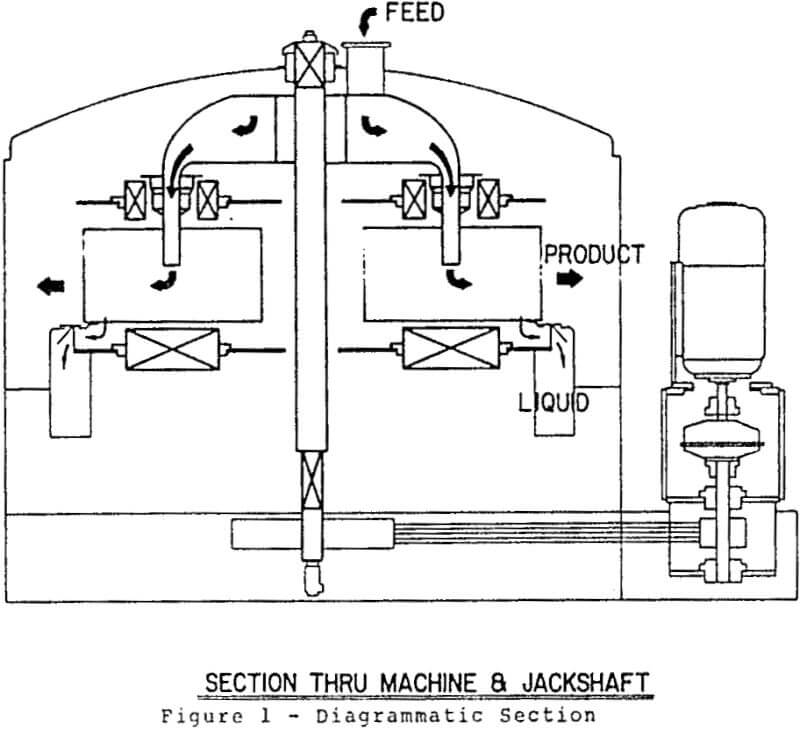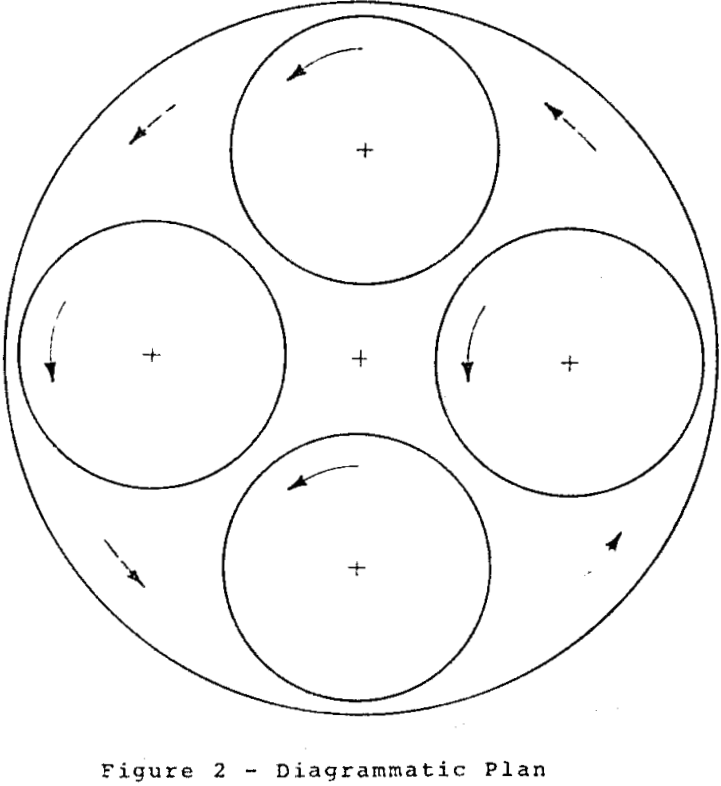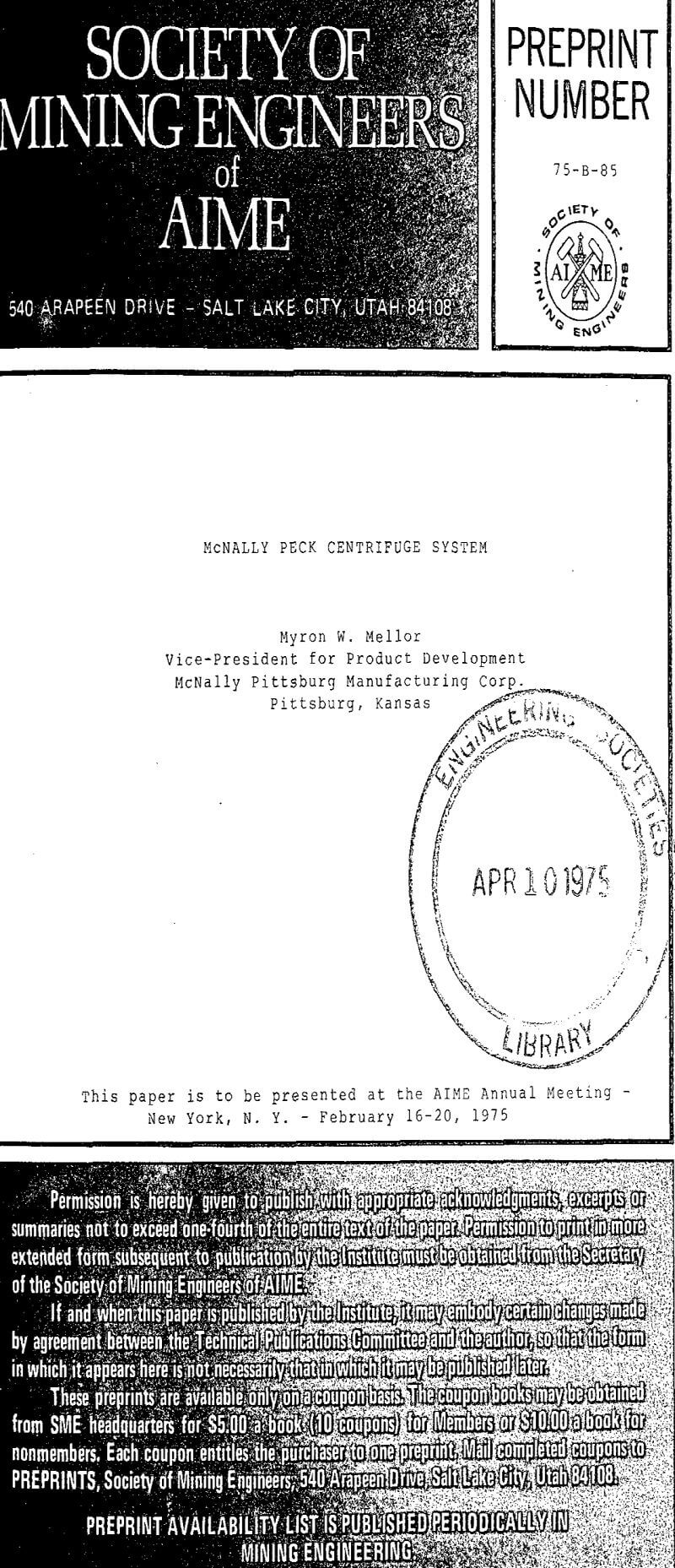The unit consists of two rotary carriers between which there is a mounted series of independently rotatable slurry receiving baskets which are circumferentially spaced and, therefore, during rotation of the carrier, orbit about the axis of rotation of the carrier. The speed of the rotating carrier plates determines the centrifugal force available, while the speed of the orbiting baskets on the carrier plate determines the retention time of the material being processed.
A rotary spider having radially extending feed channels deposits the slurry in the central region of each basket during the orbiting and rotational movements of the latter and each basket is provided with filter means which is dependent upon centrifugal phenomena to separate liquid from the solid particles and to discharge the liquid into a surrounding outer liquid discharge apron and discharge the solid material from an inner annular discharge apron.
Slurry is fed into the unit at the top near the center through a stationary pipe mounted over the rotating feed hopper. About 280 G’s are imposed at the discharge point of the solids from the basket; this can be varied by an adjustable speed drive. The rotating feed hopper distributes the slurry equally into the “eye” of each basket. The dewatered particles are discharged over the end of the vane while the liquid, after passing through the filter screen, is caught in the water trap behind the filter and directed downward and out.
Feed: Approximately 28 Mesh x 0 slurry containing 15% – 60% solids
Product: As low as 6% surface moisture
Effluent: Low solids percentage, mostly 325 Mesh x 0
Capacity: Approximately 80 TPH dewatered solids with 50% solids in the feed.
Power: Main drive – 150 HP attached to hydraulic drive system
Physical Size (Approx.): 12′ diameter x 8′ high
The feed to the centrifuge consisted of 27.3% solids (by wt.) and a product was produced with only 16.1% total moisture (approximately 10.4% inherent moisture). The test showed only .92% solids in the effluent which calculates to be a product recovery of 95.8%.
The feed to the centrifuge consisted of 33.14% solids (by wt.) and a product was produced with only 17.22% total moisture (approximately 11% inherent moisture). The test showed only 8.6% solids in the effluent which calculates to be a product recovery of 86.15%. The lower product recovery rate is due to a high amount of clay in the feed.



